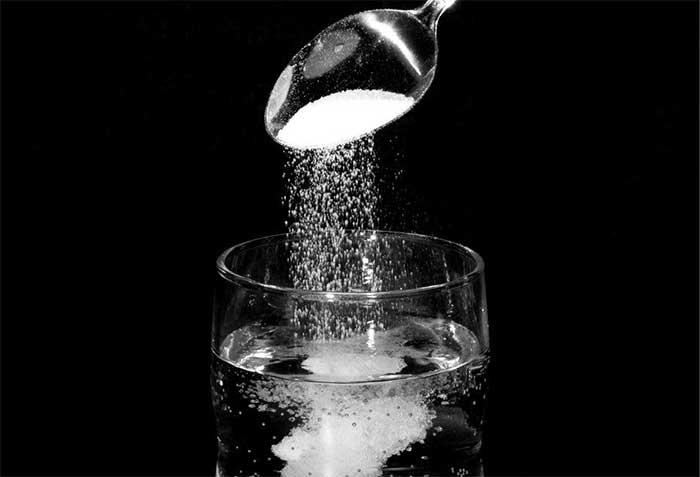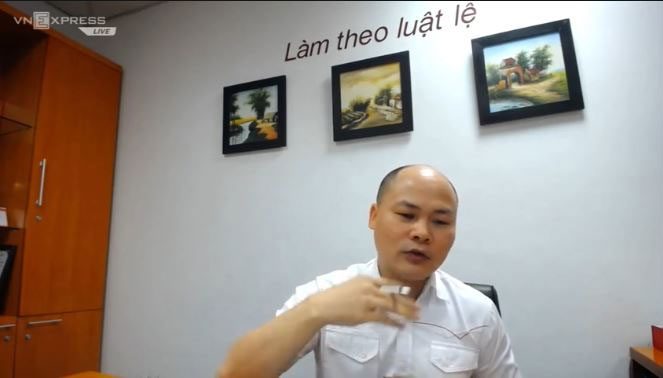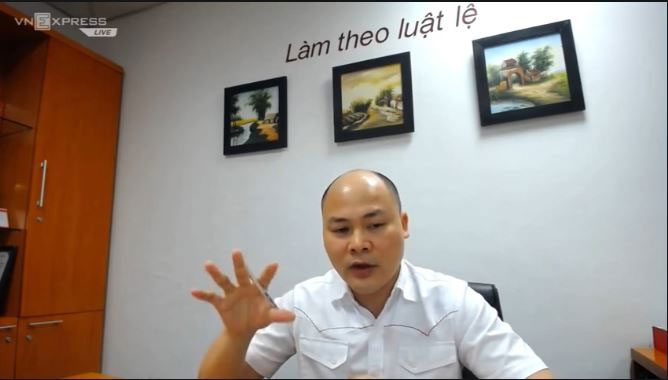CEO of Bkav, Nguyễn Tử Quảng, has created a stir by revealing that Bkav is researching a Covid-19 testing device that uses saline solution, with results available in just 10 seconds. The majority of public opinion is “unable to believe it,” questioning why such a method has not been seen globally, especially as Covid-19 continues to rage in many places.
In fact, since late last year, Western researchers have discovered a new Covid-19 testing method based on gargling with saline instead of using nasal swabs, yielding encouraging initial results.
According to the British Columbia Medical Journal (BC, Canada), BC is one of the first jurisdictions in the world to implement the collection method using gargling saline (“gargling saline”) for Covid-19 testing. In September 2020, collection centers across BC began providing saline as an alternative to throat swabs for children and teenagers of school age. By the time this article was published, gargling saline could also be offered to others.

The gargling saline testing solution offers significant benefits – safe, inexpensive sampling – but most importantly, it is less invasive.
Why Choose Gargling Saline?
Why is there a need for an alternative sampling method instead of swabs? When Covid-19 swept the globe last year, global supply chains came to a halt. During the pandemic, testing became crucial; however, with few suppliers of swabs and high global demand, there was a significant shortage of swabs worldwide.
Moreover, the Covid-19 virus could reach even remote communities, and the need for symptomatic farmers to leave their localities for testing raised significant concerns about spreading Covid-19 to these communities. The ideal solution would allow farmers to collect samples at their farms without requiring medical personnel.
This is precisely why Western researchers have been seeking and studying alternative Covid-19 testing solutions.
According to the aforementioned scientific article, saliva was the most common alternative method that did not rely on swabs at that time; however, saliva testing faced the challenge that some patients could not provide sufficient volume, and saliva is a challenging specimen type for laboratories to handle. Additionally, the mucoid nature of saliva is not ideal for laboratories and requires additional processing steps to prepare the sample for polymerase chain reaction (PCR) testing.
However, researchers found that gargling saline emerged as a highly viable option independent of swabs. Laboratory tests on the performance, stability, and suitability of gargling saline were evaluated. Gargling saline performed well compared to standard specimen transport media and throat swab tools.
After confirming the analysis of this sample type, BC Children’s Hospital conducted clinical trials, requiring volunteers to provide swabs, gargling saline, and appropriate saliva samples for parallel testing. Clinical confirmation demonstrated that the interpretation of nucleic acid test results from NP swabs was equivalent to that of gargling saline, while saliva showed lower clinical sensitivity, particularly in pediatric patients.
Subsequently, Michael Worobey, head of the Department of Ecology and Evolutionary Biology at the University of Arizona, USA, who specializes in studying the evolution of viruses, conducted research on this solution. According to his findings, gargling saline tests were more sensitive than throat swab tests. It also appeared to be significantly more sensitive than tests based solely on saliva samples, where subjects merely needed to spit into a cup.
Worobey noted that the increased sensitivity might be related to the process of obtaining specimens from the throat via swabs versus gargling saline. He hopes that the gargling saline test meets expectations and can eventually be used not only for research purposes but also for public health and clinical diagnostic testing on the University of Arizona campus and beyond.
What is Bkav’s Solution?

Nguyễn Tử Quảng reveals the Covid-19 testing solution using saline solution with the assistance of AI. (Screenshot).
According to CEO Nguyễn Tử Quảng’s remarks during an online discussion about the application of AI in the fight against Covid-19 on June 4, the Covid-19 testing solution that Bkav is researching involves using saline solution for gargling by individuals needing screening, then placing it in a test tube and into a device; after pressing a button, results are available in 10 seconds thanks to AI assistance. Currently, an Israeli company is also researching this solution.
Quảng stated that the company has collaborated with the Central Tropical Diseases Hospital since December 2020, conducting trials there, collecting training samples for AI, and initial results are very promising. “The initial detection rate is very good, over 90%. If the device is successful, it will change the strategy for combating Covid-19,” Quảng said.
“For example, in industrial zones, workers can simply gargle with saline in the morning and place it in the machine to know who is negative and who is positive. Those who test negative can go to work, while those who test positive will be sent to isolation. We can carry out screening campaigns quickly, at no cost, using only saline; there’s no need for testing kits, and reagents are often expensive and sometimes in short supply.”

Quảng mentioned that initial results are promising and official results will be available in a few days.
Thus, Bkav’s research solution is not the first in the world, but it differs in its use of AI. CEO Bkav explained:
“We use a spectrum of light, shining it into the test tube containing the gargling saline of the person being tested, then we collect data with a sensor at the output, and we can measure which frequencies are absorbed to varying degrees. Different absorption frequencies indicate different diseases. In this case, it’s Covid-19, but to the naked eye, we cannot see the differences in those absorption frequencies, so we need to train the AI to recognize the samples from Covid-19 infected patients versus those from healthy individuals. The initial results are very promising.”
Quảng noted that initial results are promising, and official results will be available in a few days to share with everyone. If such a testing tool is available, according to Quảng, the strategy against Covid-19 will change. Because the technology using saline is simpler, the investment cost for a test (including both costs and labor) is much lower, almost requiring no expenditure, using only saline.
Similar to Singapore, breath testing technology has now been implemented. However, the cost of this testing machine is quite high (On the morning of June 4, the Ministry of Health received 30 Covid-19 breath testing machines imported from Singapore, along with medical supplies for 2 million Covid-19 tests, with a total value of 460 billion VND donated by Vingroup). If testing involves throat or nasal swabs, the cost ranges from 200,000 to 700,000 VND per test.
In fact, if the saline solution testing method is successful, it will not only change the Covid-19 prevention strategy in Vietnam but also globally, as we could easily and quickly detect Covid-19 infections at a significantly lower cost and effort.



















































